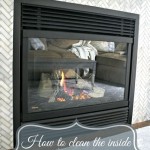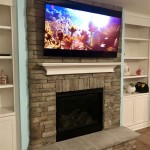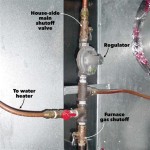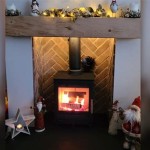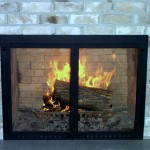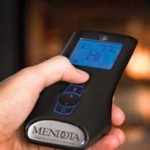Coal Fireplace Summer Cover: Protecting and Preserving Your Hearth
A coal fireplace, a relic of a bygone era, often stands as a focal point in older homes, evoking a sense of history and warmth. While primarily utilized during the colder months, the inactive summer period presents unique challenges regarding maintenance and preservation. Implementing a suitable coal fireplace summer cover becomes crucial for protecting the fireplace from environmental factors and potential damage, ensuring its longevity and aesthetic appeal.
The function of a coal fireplace diverges significantly from that of a wood-burning counterpart. Coal fireplaces typically feature a deeper firebox designed to accommodate the dense fuel, and often incorporate a grate system to allow for efficient air circulation. The combustion process of coal also produces unique byproducts, necessitating specialized cleaning and maintenance procedures. These distinctions must be considered when selecting and installing a summer cover. Choosing the correct cover material and ensuring proper installation are vital to maximizing its protective benefits.
Understanding the Need for a Summer Cover
The absence of active combustion within the fireplace during the summer months doesn't negate the potential for degradation. Several factors contribute to the necessity of employing a fireplace cover during this period. The most prominent concern is preventing the ingress of moisture. Humidity, rain, and even condensation forming within the chimney can seep into the firebox, leading to rust and corrosion of metal components. This is particularly problematic for grates, dampers, and any iron or steel framework within the fireplace structure. Over time, rust can weaken these elements, compromising the structural integrity of the fireplace and potentially leading to costly repairs.
Another significant threat is the influx of insects and small animals. Open chimneys provide easy access for birds, squirrels, rodents, and insects seeking shelter. Nests and debris accumulated by these creatures can obstruct airflow, creating a fire hazard when the fireplace is reactivated in the fall. Furthermore, animal waste can introduce unpleasant odors and contribute to unsanitary conditions within the home. Properly sealing the fireplace opening with a summer cover effectively blocks these unwanted intruders, maintaining a clean and safe environment.
Drafts, a common issue in many homes, can also be mitigated through the use of a fireplace cover. Even when the damper is closed, air leakage can occur, leading to energy loss and temperature fluctuations within the living space. A well-fitted cover acts as an additional barrier, minimizing drafts and improving overall energy efficiency. This is particularly beneficial in homes with older chimneys that may have cracks or other imperfections.
Selecting the Appropriate Cover Material
The effectiveness of a coal fireplace summer cover hinges largely on the material from which it is constructed. Different materials offer varying degrees of protection and durability, and the ideal choice will depend on individual needs and preferences. Several common options exist, each with its own advantages and disadvantages.
Canvas covers are a popular and relatively inexpensive option. They are typically treated with a water-resistant coating, providing basic protection against moisture. Canvas covers are lightweight and easy to install, making them a convenient choice for many homeowners. However, their durability is limited compared to other materials. Canvas is susceptible to tearing and fading over time, particularly when exposed to direct sunlight. Furthermore, canvas covers may not provide a complete seal against drafts or insects, especially if they are not properly fitted.
Vinyl covers offer superior water resistance compared to canvas. Vinyl is a non-porous material that effectively blocks moisture, preventing rust and corrosion. Vinyl covers are also more durable than canvas, resistant to tearing and fading. However, vinyl can be less breathable than other materials, potentially trapping moisture inside the fireplace. To mitigate this issue, some vinyl covers are equipped with ventilation holes or mesh panels to allow for airflow. Vinyl covers are generally slightly more expensive than canvas, but their increased durability makes them a worthwhile investment for many homeowners.
Metal covers, typically made from steel or aluminum, provide the most robust protection against the elements. Metal covers are highly durable, resistant to tearing, fading, and insect damage. They also offer excellent protection against drafts, creating a tight seal that minimizes air leakage. Metal covers are often custom-made to fit the specific dimensions of the fireplace opening, ensuring a precise and secure fit. However, metal covers are the most expensive option and can be more difficult to install than canvas or vinyl covers. They also require periodic maintenance to prevent rust and corrosion, particularly in humid environments.
Inflatable chimney balloons represent another alternative. These devices are inserted into the chimney flue and inflated to create an airtight seal. Chimney balloons are effective at blocking drafts and preventing the entry of insects and animals. They are also relatively easy to install and remove. However, chimney balloons are not suitable for all fireplaces. They require a straight, unobstructed chimney flue and may not be compatible with fireplaces that have a complex damper system. Furthermore, it's crucial to remember to deflate the balloon before reactivating the fireplace, as failure to do so can create a dangerous fire hazard.
Proper Installation and Maintenance
Regardless of the chosen material, proper installation is crucial for maximizing the effectiveness of a coal fireplace summer cover. A poorly installed cover can be ineffective at preventing moisture intrusion, insect infestation, and drafts. Before installing the cover, the fireplace should be thoroughly cleaned. Remove any ash, soot, or debris from the firebox and chimney flue. This will prevent unpleasant odors and ensure that the cover creates a tight seal. When installing a canvas or vinyl cover, ensure that it is securely fastened to the fireplace opening. Use appropriate clips, straps, or adhesive to hold the cover in place. For metal covers, follow the manufacturer's instructions carefully. Metal covers are often bolted or screwed into the fireplace surround, requiring precise measurements and proper tools.
Regular maintenance is essential for prolonging the lifespan of the fireplace cover and ensuring its continued effectiveness. Canvas and vinyl covers should be inspected periodically for tears, holes, or fading. Minor damage can often be repaired with patches or sealant. Metal covers should be inspected for rust and corrosion. Any rust spots should be removed and treated with a rust-inhibiting primer and paint. Inflatable chimney balloons should be checked regularly for leaks. If the balloon deflates, it should be reinflated or replaced. At the end of each summer season, the fireplace cover should be removed and stored properly. Clean the cover thoroughly and allow it to dry completely before storing it in a cool, dry place. This will prevent mold and mildew growth and ensure that the cover is ready for use the following year.
In addition to the cover itself, it is beneficial to maintain the chimney structure. Schedule regular chimney inspections by qualified professionals. These inspections can identify potential problems such as cracks, leaks, or obstructions. Addressing these issues promptly can prevent further damage and ensure the safe operation of the fireplace. Consider applying a sealant to the exterior of the chimney to prevent water penetration. This is particularly important for older chimneys that may have porous brick or stone.
Selecting and maintaining a coal fireplace summer cover requires careful consideration, but the investment in time and effort can significantly extend the lifespan of the fireplace and preserve its aesthetic appeal. By understanding the need for a cover, selecting the appropriate material, and ensuring proper installation and maintenance, homeowners can protect their hearth from the damaging effects of moisture, insects, and drafts, allowing them to enjoy the warmth and ambiance of their coal fireplace for years to come.

What Is A Fireplace Summer Cover Or Door

Ornate Four Piece Cast Iron Summer Fireplace Cover Architectural Antiques

Rare And Magnificent Cast Iron Circa 1900 Fireplace Surround Summer Cover With Stylized Griffin Vintage Victorian Tiles
Vintage Cast Iron Surround Summer Cover Hearth Com Forums Home
Vintage Cast Iron Surround Summer Cover Hearth Com Forums Home

19th Century American Victorian Era Black Enameled Ornamental Cast Iron Interior Residential Coal Or Wood Burning Fireplace Summer Cover

Bring History With Antique Summer Fireplace Covers

Hard To Find And Highly Desirable Original Intact Ornamental Cast Iron Copper Plated Minerva Interior

Antique Cast Iron Coal Fireplace Cover Grate Ornate Victorian Furnace Heat

Original C Late 1870 S Chicago Interior Residential American Victorian Era Coal Or Wood Burning Antique Fireplace Mantels Interiors
Related Posts


